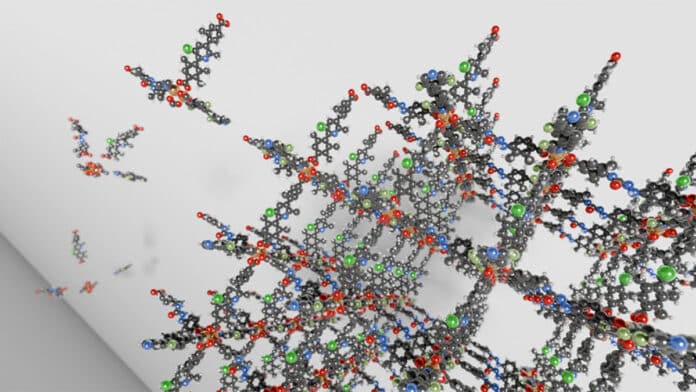Carbon capture technology can help reduce greenhouse gas emissions from power plants and other industrial facilities. However, finding a suitable material that can do this efficiently and affordably is still an open problem. Metal-organic frameworks (MOFs) could be a viable solution.
MOFs are porous materials that can selectively absorb carbon dioxide, and they have three different building blocks in their molecules that can be arranged in various configurations. This means that there are countless potential MOF designs for scientists to explore and test.
Researchers from the U.S. Department of Energy’s (DOE) Argonne National Laboratory are taking several pathways to speed up the discovery process. One of them is through generative artificial intelligence (AI), which can help in identifying previously unknown building block candidates.
Another pathway is machine learning, while a third one involves high-throughput screening of candidate materials. Lastly, the researchers are using theory-based simulations through molecular dynamics.
For this project, researchers are collaborating with other research institutions like the Beckman Institute for Advanced Science and Technology at the University of Illinois Urbana-Champaign (UIUC), the University of Illinois at Chicago, and the University of Chicago.
The team explored the MOF design space with generative AI, which enabled them to quickly assemble, building block by building block, over 120,000 new MOF candidates within 30 minutes. This approach can potentially save a lot of time and resources that would otherwise be spent on traditional experimental and computational work.
The team also relied on powerful supercomputers such as Polaris and Delta to perform molecular dynamics simulations and screen the most promising candidates for carbon capture. This approach could ultimately allow scientists to synthesize just the very best MOF contenders.
“We are now connecting generative AI, high-throughput screening, molecular dynamics, and Monte Carlo simulations into a standalone workflow,” said Argonne computational scientist Eliu Huerta, who helped lead the study. “This workflow incorporates online learning using past experimental and computational research to accelerate and improve the precision of AI to create new MOFs.”
Additionally, the researchers will soon get access to the Aurora supercomputer at Argonne Leadership Computing Facility at the Laboratory, where scientists could survey billions of MOF candidates at once, including many that have never even been proposed before.
“The study demonstrates the great potential of using AI-based approaches in molecular sciences,” said UIUC’s Tajkhorshid. “We hope to extend the scope of the approach to problems such as biomolecular simulations and drug design.”
“This work is a testament to the collaboration between graduate students and early-career scientists from different institutions who came together to work on this important AI for science project,” Huerta said. “The future will stay bright as we continue to inspire and be inspired by talented young scientists.”
Journal reference:
- Hyun Park, Xiaoli Yan, Ruijie Zhu, Eliu A. Huerta, Santanu Chaudhuri, Donny Cooper, Ian Foster, and Emad Tajkhorshid. A generative artificial intelligence framework based on a molecular diffusion model for the design of metal-organic frameworks for carbon capture. Nature Communications Chemistry, 2024; DOI: 10.1038/s42004-023-01090-2
